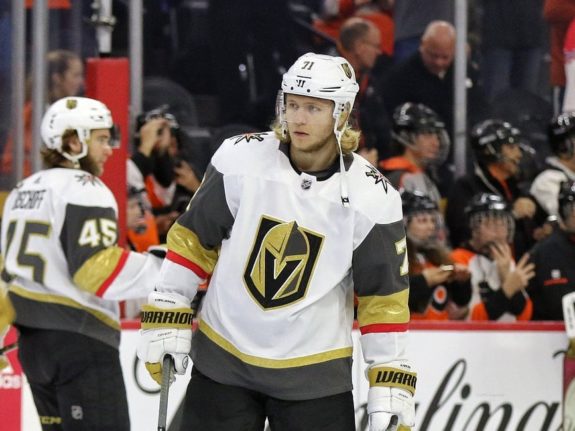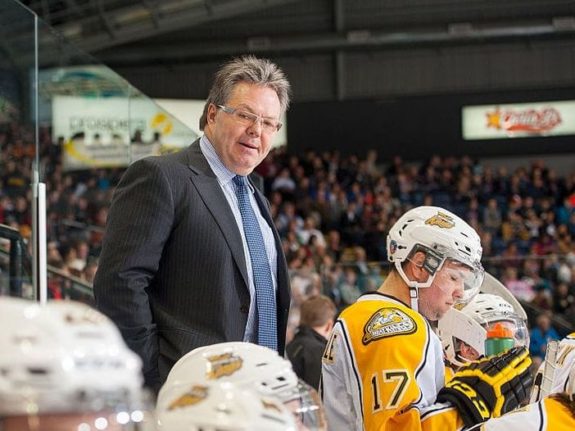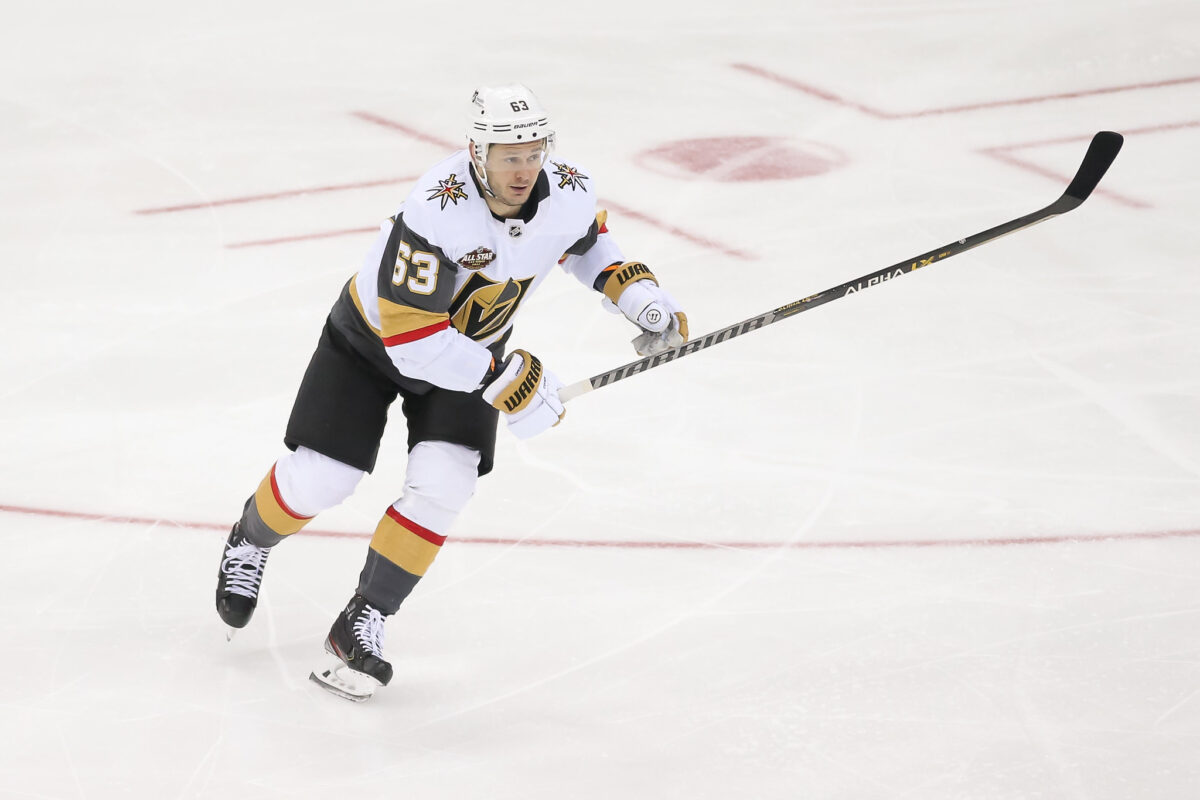Last Friday, my esteemed THW colleague Jim Parsons penned an article about the Vegas Golden Knights’ downward spiral, both in on-ice performance and front office management and also in the eyes of hockey fans. It was a thoughtful, well-argued piece that probably echoed the sentiments of many supporters of the NHL’s 31 other franchises.
Here’s the thing, though – I don’t cover any of those other 31 teams. So as the resident Golden Knights guy here at THW, I feel it’s my duty to offer a response to Mr. Parsons about why things might not be so gloomy around T-Mobile Arena. There’s no question that the 2021-22 season, even one that still offers a strong chance at a playoff spot, has been a disappointment for Vegas. But for as much as no one wants to lean on the old ‘injury problems’ excuse, it’s been a pretty big elephant in the room all year.
It’s impossible to say where the Golden Knights would be without a barrage of injuries except to acknowledge that cap headaches would likely be even more pronounced, but there’s no arguing that being without Mark Stone, Max Pacioretty, Robin Lehner, Alec Martinez and Brayden McNabb for lengthy stretches has hurt, to say nothing of the Jack Eichel waiting game. For a team currently clinging to the second and final wild card spot in the West, those absences count.
Admittedly, the injury self-pitying doesn’t address the broader organizational issues that Parsons addressed, nor does it endear them anymore in the perception of fans. So let’s dig into some of his key criticisms to examine just where these ‘NHL villains’ really stand.Willi
“Vegas Abandoned Most of Their Expansion Team”
It’s ironic that the inaugural Knights became embraced as a ragtag group of underdog cast-offs who made a Stanley Cup Final run that was as unlikely as it was historic. After all, that was never deep-pocketed owner Bill Foley’s vision for this club. The Golden Knights were always going to push to be a flashy, star-laden outfit befitting of the Strip. That only seven of the original 30 players to suit up for the team in year one remain is simply part of that process.
The success of the expansion group has understandably made the organization’s cold, non-sentimental approach to its own development tough to swallow. But as we’ve seen from William Karlsson’s fade from 43-goal-scorer back to reality in subsequent seasons, there was reason to believe that the expansion core’s performance wasn’t sustainable. Picking fringe talent off of teams’ unprotected list was never going to net a perfect roster. Ultimately, it was through those early gains and expansion draft execution that acquiring players like Stone, Pacioretty and eventually Eichel became possible.

Also, let’s not pretend Vegas’ turnover rate in that time is unique. Teams that seem to have long-standing foundational cores like the Pittsburgh Penguins (eight players still on the roster from 2017-18) and the Toronto Maple Leafs (five players) don’t have as much carryover as you might think. I won’t argue that the departures of early franchise pioneers like head coach Gerard Gallant and Marc-André Fleury were particularly well handled, but Vegas is hardly alone in its ‘villainy’ in this regard.
“Vegas Abuses the Salary Cap Like Few Others”
With more than $92 million currently dedicated to player salaries thanks to a deep dip into LTIR, the Golden Knights certainly seem to be making a mockery of the salary cap. GM Kelly McCrimmon’s management philosophy seems to be ‘add the player now and worry about the rest later.’ The way you feel about that may largely depend on your own moral compass when it comes to the business side of sports.

On the one hand, the whole point of the cap is to serve as something of an equalizer among have- and have-not teams to create an even playing field and ensure that Stanley Cups are being awarded on roster-building and performance rather than who can throw the most money around. On the other hand, the rules stand as they are and it is a GM’s job to explore the boundaries of the rules in order to exploit them as advantageously as possible for your team.
I mean, if your team’s GM isn’t doing everything in their power to improve your club, shouldn’t they be? Sure, this could still come back to bite McCrimmon and the Golden Knights now that Martinez is back and the cap-easing Evgenii Dadonov trade has been voided, but Vegas continues to operate within the rules of the league – at least for now.
“The Recent Dadonov Trade Isn’t a Good Look”
In the same vein of the Golden Knights’ sometimes dodgy cap management, the club’s front office couldn’t even execute the salary dump of a pretty good 17-goal-scorer along with a second-round pick without some shadiness. There was some initial confusion over who was in the wrong amid questions of whether Dadonov had properly filed his partial no-movement clause to contractually reject a trade to Anaheim, but the NHL ultimately ruled in favor of the player. (from “LeBrun: Inside the Evgenii Dadonov trade reversal and what we learned about no-trade lists”. Pierre LeBrun, The Athletic. March 23, 2022)

In all likelihood, the failed Dadonov trade means the Golden Knights can’t expect much help from their LTIR ranks for the rest of the playoff push, nor has it probably won them many fans among league officials or player agents. But does any of that matter? Vegas has still won two in a row ahead of a pair of tilts with the lowly Seattle Kraken. As for their league-wide reputation, the tax-free status of Nevada that Parsons noted will still likely preserve their appeal as a destination.
“A Stanley Cup or Bust Team That Might Miss the Playoffs”
For some, seeing a Golden Knights team that entered the season with legitimate Stanley Cup aspirations miss the postseason entirely might be the greatest karmic justice possible. That, of course, remains to be seen. The final 14 games on the schedule feature just five home contests, but somehow only have Vegas pitted against four teams currently holding playoff spots.
You may also like
- Every NHL Team’s Most Underrated Prospect
- Oilers’ First-Round Playoff Series Ranked Most Ideal to Least
- Thompson & Marchessault Elevate Golden Knights Past Blues
- NHL Rumors: Capitals, Maple Leafs, Golden Knights
- Golden Knights’ Scenarios to Get Into the 2024 Playoffs
It promises to be a dogfight the rest of the way, with major pressure on Vegas to take advantage of a soft upcoming slate with two games against Seattle, three against Vancouver and a match-up with the Arizona Coyotes on the horizon. They’ve also got critical upcoming battles with the Edmonton Oilers and Dallas Stars that could shape the postseason race.
Now, squeaking into the playoffs with a late surge still won’t be a satisfactory outcome here, especially if it leads to a first-round series against the Colorado Avalanche. If, however, they can overcome all their injuries, build momentum and get some major reinforcements back for the playoffs, then watch out. It’ll almost be like the 2017-18 team all over again, but only if you replace the near-universal support with near-universal groans and eye-rolling.
While this may not serve to effectively absolve the Golden Knights organization of the villainy that Parsons’ piece laid out, it should at least help foster an understanding of the organizational ethos and McCrimmon’s ‘leave no stone unturned approach to roster-building. Even if you love to hate this franchise, wouldn’t you kind of like your team to operate this way?
